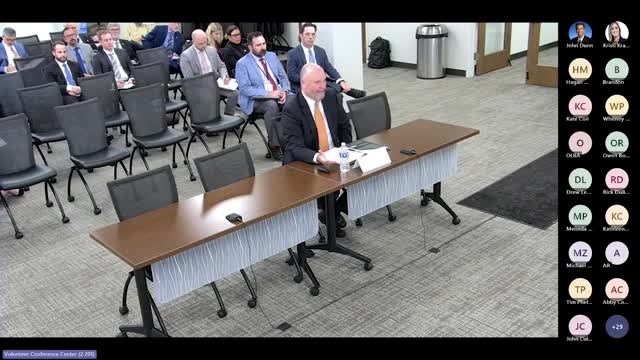Tennessee faces chronic labor shortages despite economic growth
November 05, 2024 | Comptroller of the Treasury, Agencies, Boards, Commissions, and Councils, Organizations, Executive, Tennessee
This article was created by AI summarizing key points discussed. AI makes mistakes, so for full details and context, please refer to the video of the full meeting. Please report any errors so we can fix them. Report an error »

In a recent government meeting, officials discussed the ongoing challenges and dynamics of Tennessee's labor market, highlighting a persistent gap between job demand and labor supply. Despite the state's robust economic growth, the labor force participation rate continues to decline, raising concerns about the sustainability of this growth.
Key data presented revealed that even if every unemployed individual in Tennessee were to secure a job today, there would still be approximately 64,000 unfilled positions. This chronic labor shortage has been evident since late 2020, with the demand for workers consistently outpacing the available labor supply. Factors contributing to this disparity include geographic mismatches between job locations and worker availability, as well as skill mismatches in the workforce.
The meeting underscored the implications of this labor market imbalance, particularly the upward pressure on wages and salaries. As the demand for workers increases, so too do incomes, which, while beneficial for workers, also contributes to inflationary pressures within the economy. Tennessee's per capita income has risen to $62,229, narrowing the gap with the national average, which previously stood 10 to 15 percentage points higher. However, officials cautioned that the state's relative affordability may be diminishing as wages rise.
Overall, the discussions highlighted the need for strategic interventions to address the labor shortages and ensure that Tennessee's economic growth can be sustained in the face of these challenges.
Key data presented revealed that even if every unemployed individual in Tennessee were to secure a job today, there would still be approximately 64,000 unfilled positions. This chronic labor shortage has been evident since late 2020, with the demand for workers consistently outpacing the available labor supply. Factors contributing to this disparity include geographic mismatches between job locations and worker availability, as well as skill mismatches in the workforce.
The meeting underscored the implications of this labor market imbalance, particularly the upward pressure on wages and salaries. As the demand for workers increases, so too do incomes, which, while beneficial for workers, also contributes to inflationary pressures within the economy. Tennessee's per capita income has risen to $62,229, narrowing the gap with the national average, which previously stood 10 to 15 percentage points higher. However, officials cautioned that the state's relative affordability may be diminishing as wages rise.
Overall, the discussions highlighted the need for strategic interventions to address the labor shortages and ensure that Tennessee's economic growth can be sustained in the face of these challenges.
View full meeting
This article is based on a recent meeting—watch the full video and explore the complete transcript for deeper insights into the discussion.
View full meeting
